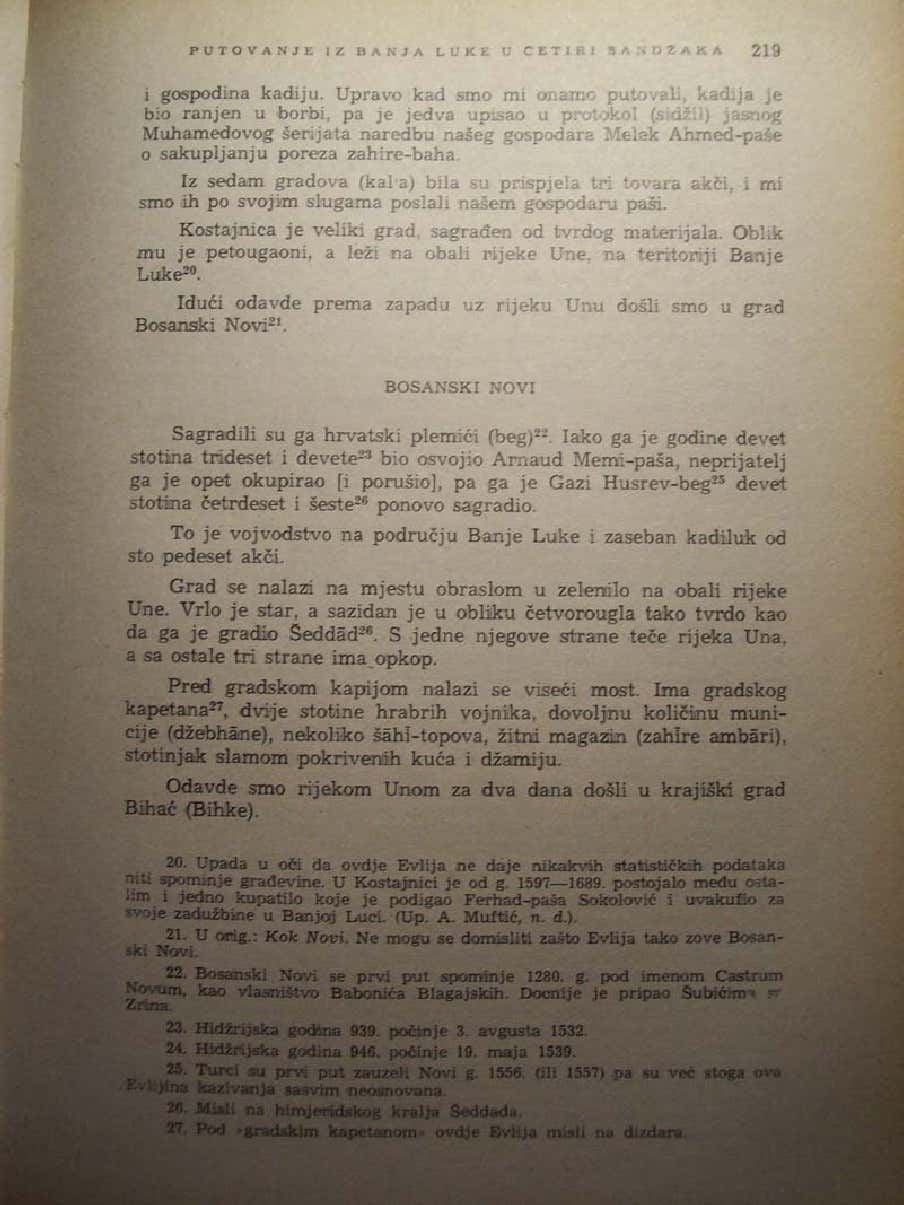Bosanski Novi
The town was first mentioned in 1280 under the Latin name Castrum Novum which, literally translated, means ‘new fort’. In 1483, the Battle of Una was fought near the city. It belonged to the dukes of Blagaj and in the early sixteenth century came under power of Nikola Zrinski. Croatian ban Adam Bačan conquered Novi in 1693.
Evliya Çelebi on his journey through Bosnia mentions that Croatian nobles built Novi Grad. Hazim Šabanović, Putopis : odlomci o jugoslavenskim zemljama, 1967, academia.edu-Evlija_Celebi_Putopis (on page 219):

In 1895, during Austro-Hungarian rule in Bosnia and Herzegovina, the town was officially given the name Bosanski Novi. At the same time, the city included around 3,300 people with 550 households. Wooden bridges existed across the Una and Sana rivers which the citizens had to guard against floods in the autumn and spring. For that reason, a current-day symbol of the town was built in 1906—the Una quay.
In 1872, Novi Grad was the first municipality to have a train station on the new Bosnian railway, which afforded it significant cultural and economic advantages over other Krajina municipalities. The first hospital was established around the same time.
From 1929 to 1941, Bosanski Novi was part of the Vrbas Banovina of the Kingdom of Yugoslavia.
From 1992 through 1995, the town was ethnically cleansed of its Bosniak and Croat inhabitants, thereby rendering it almost completely Serb-populated. In order to distance the town from its Bosnian history and its cultural roots and in tune with the war politics, the local Serb government renamed the town to Novi Grad, a change criticized by Croat and Bosniak residents. Consequently, majority of people from Bosanski Novi were misplaced and live all over Europe, the American continent, Australia and elsewhere around the globe.
Aside from the town of Novi Grad, the municipality includes the following settlements:
- Ahmetovci
- Blagaj Japra
- Blagaj Rijeka
- Blatna
- Cerovica
- Crna Rijeka
- Čađavica Donja
- Čađavica Gornja
- Čađavica Srednja
- Ćele
- Devetaci
- Dobrljin
- Donje Vodičevo
- Donji Agići
- Donji Rakani
- Gornje Vodičevo
- Gornji Agići
- Gornji Rakani
- Grabašnica
- Hozići
- Johovica
- Jošava
- Kršlje
- Kuljani
- Lješljani
- Mala Krupska Rujiška
- Mala Novska Rujiška
- Mala Žuljevica
- Maslovare
- Matavazi
- Mazić
- Petkovac
- Poljavnice
- Prusci
- Radomirovac
- Rakovac
- Rašće
- Ravnice
- Rudice
- Sokolište
- Suhača
- Svodna
- Trgovište
- Vedovica
- Velika Rujiška
- Velika Žuljevica
- Vitasovci
Additional resources:


